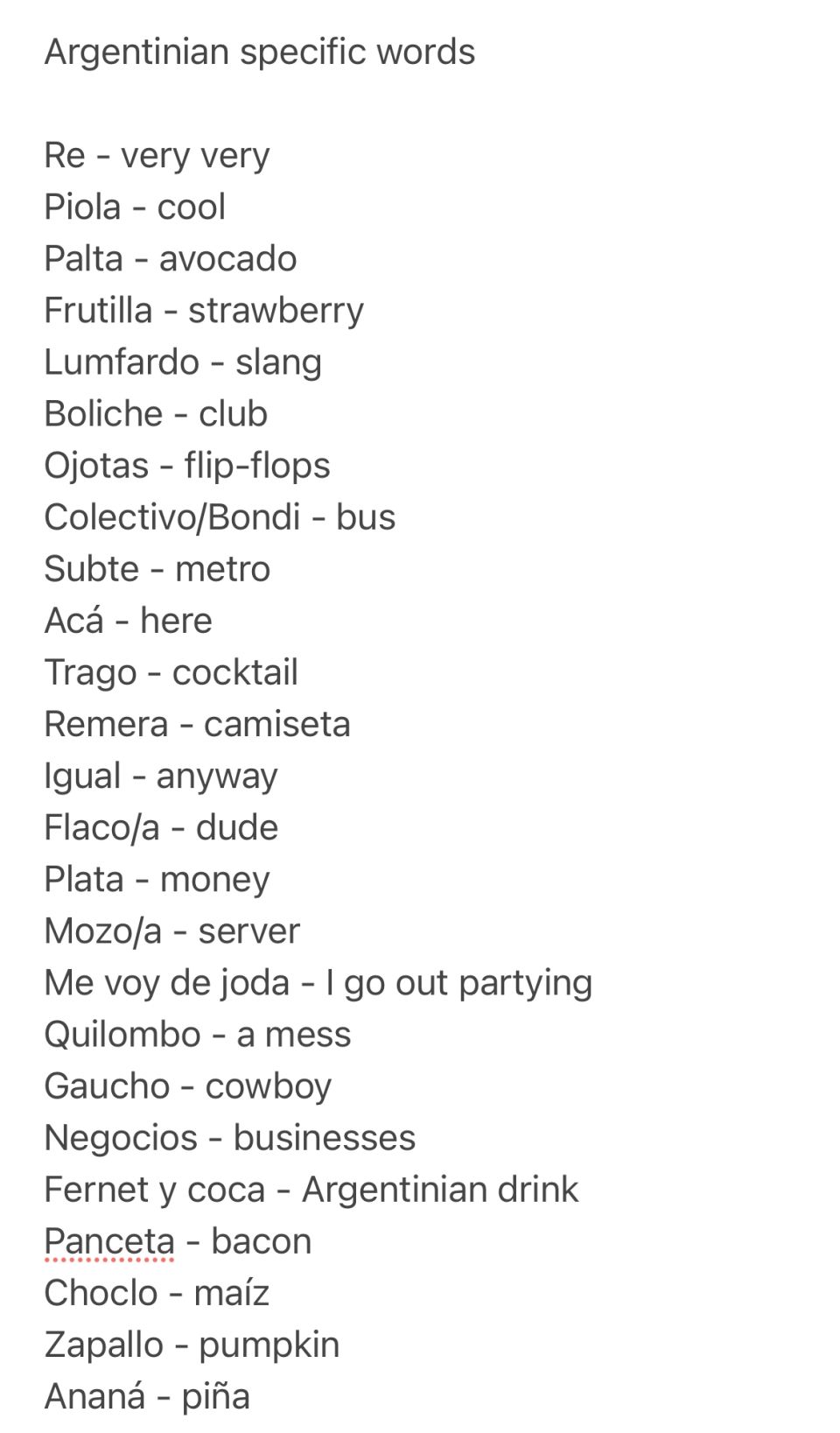Argentinian Culture: The Kiss, Language, and Time
By: Josie Stephens
The Kiss
One cultural behavior Argentinians take part in is the kiss (beso) on the cheek. In the US, typical greeting behaviors are a handshake or a hug, saving a kiss on the cheek for the closest of loved ones. But in Argentina, it’s always a kiss on the cheek, even if this is your first time meeting them. You may have heard of a similar concept from some European countries, but oftentimes they do two cheek kisses, whereas in Argentina it is only one.
Let me give you an example to make it more clear: I meet up with my fellow CIEE classmates at a restaurant. My classmate Jayden says to me, “This is my Argentinian friend, Sara.” In an American setting, this is where Sara and I would typically exchange a hug as a greeting. But instead, I go in to the left for a kind of half hug, where my right cheek touches her cheek while kind of making a kissing sound. It’s typically not a full on peck on the cheek, just a light tapping of the cheeks against each other. We would also do this on the way out when we are saying goodbye to each other. And this doesn’t just go for women – women do it with women, women do it with men, and men do it with men too.
I know this sounds odd and intimidating coming from a culture that doesn’t do this, but I promise you will get used to it. It may feel weird to you, but to your Argentinian friends and host families, it would be weird not to do it. So let that fact make you feel more at ease partaking in this very normal Argentinian custom. I got so used to it that by the end of my trip, my American classmates and I were doing it with each other out of habit.
Time
“Time is time. How could this vary by culture?” you may be wondering. Well, it’s not time itself that changes, but the culture around time that does.
Well, in the obvious sense, Argentina is in a different time zone than the US. Compared to my family in the New York time zone, I was 2 hours ahead when I was in Buenos Aires. Additionally, due to the fact that Argentina lies south of the equator, summer happens in Argentina at the exact same time that the US’s winter is happening. Therefore, when I was in Argentina in December, it was summer!
Also, similar to many other countries in the world, Argentina uses military (24-hour) time. This is something I still have not fully gotten used to, but fortunately they also know the AM/PM concept, so if you refer to 21:00 as 9:00, they will likely understand what you mean given the context.
While time is time no matter what, Argentinians’ perceptions of what is considered on-time versus late vary from ours. Argentinians don’t consider arriving 10 minutes after the meeting time to be late. Overall, it is a more relaxed culture as far as punctuality, similar to many other non-US cultures.
Language
Argentinians overall do not speak as much English compared to other countries you may have visited, so it may be extra challenging for you in Argentina if you don’t speak Spanish (or Castellano as they call it).
But the crazy part is, even if you do speak Spanish fairly well, there are a ton of words that are unique to Argentina. For example, the usual “tú eres” is “vos sos” in Argentina. I know – bonkers. In addition to that, all of the commands are different from “regular” Spanish. For example, “ven” is “vení” and “llama” is “llamá,” with the accented syllable at the end of the word. Other examples of Argentinian words are: “fresa” as “frutilla,” “aguacate” as “palta,” “piña” as “ananá,” and the list goes on and on.
Apart from the words and grammar being different, their accent is different as well. Argentina has a huge Italian influence, with 47% of Argentinians having some sort of Italian ancestry. So when they speak, it kind of sounds a little Italian. They pronounce the “y” sound (thus the “ll” sound) as a “sh” sound. For example, “calle” would normally be pronounced “cah-yay,” but in Argentina it would be pronounced “cashay.”

Related Posts

EAT, DRINK, EXPLORE: BUENOS AIRES
BEST FOOD TO EAT IN BUENOS AIRES It’s true, Argentina produces some of the best beef on earth. But given cattle’s impact on our climate, I’d prefer to steer you... keep reading

How to Asado: A Beginner’s Guide to Argentina’s Favorite Ritual
This post dives into the heart of the Argentine asado — more than just a barbecue, it’s a social ritual that brings people together around fire, food, and conversation. From the role of the asador and essential cuts of meat to must-have sides like chimichurri and ensalada criolla, readers will get a flavorful introduction to what makes an asado a uniquely Argentine experience. Whether you're a guest or planning to host one, this guide has everything you need to understand and enjoy this beloved tradition.

Top 5 Spanish Study Abroad Programs for the Summer
Summer school hasn’t always sounded the most appealing. But you’re probably thinking about it the old way: Stuck in a boring classroom while wishing you were doing anything else. Think... keep reading

